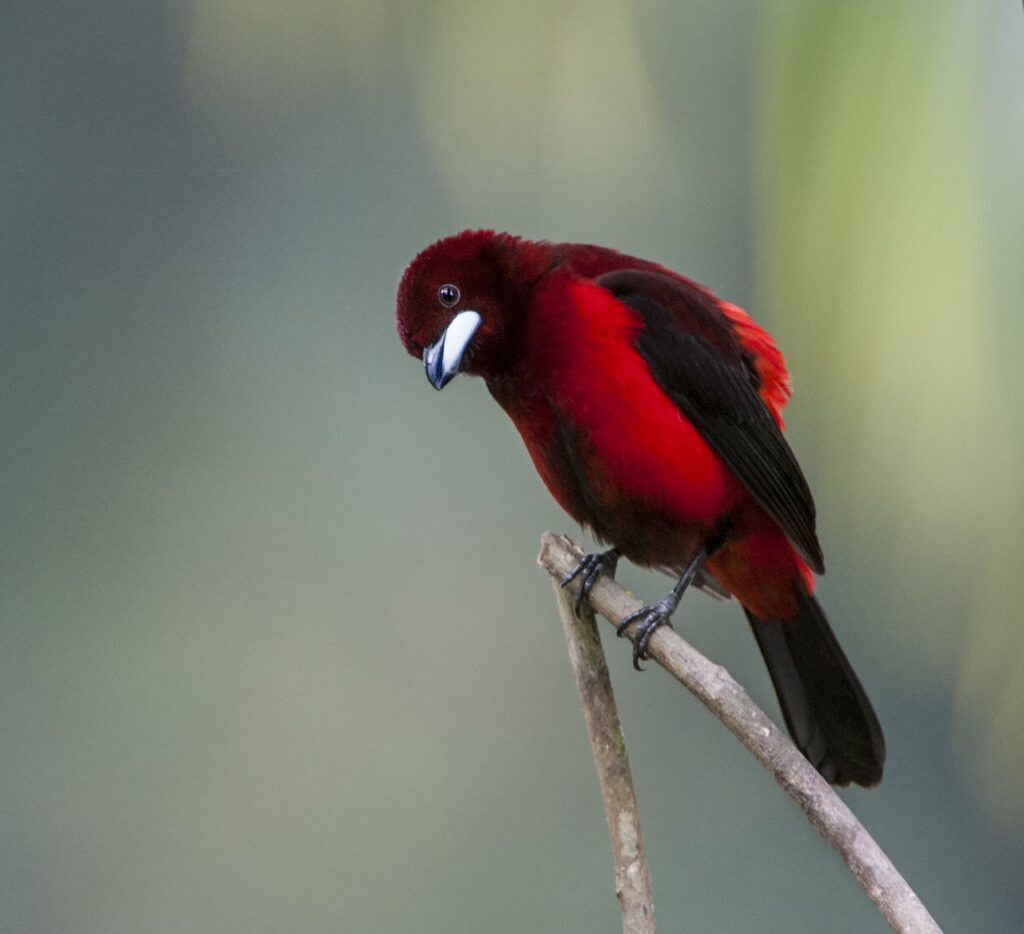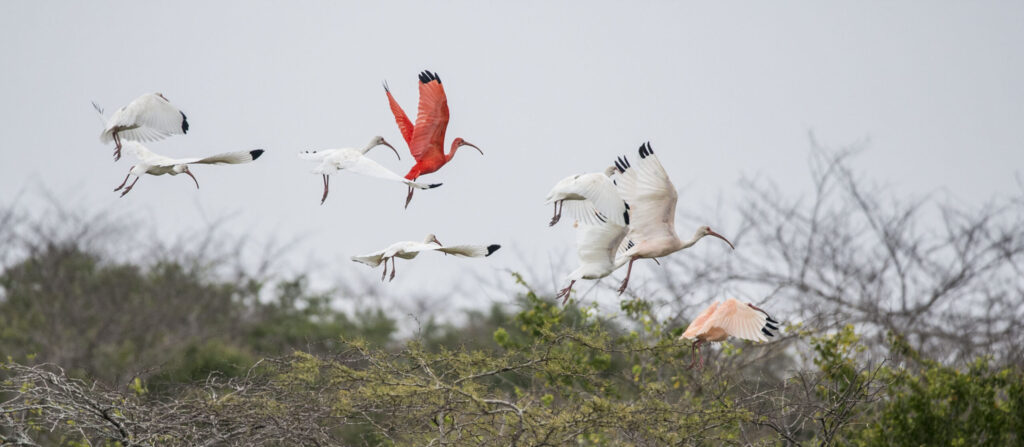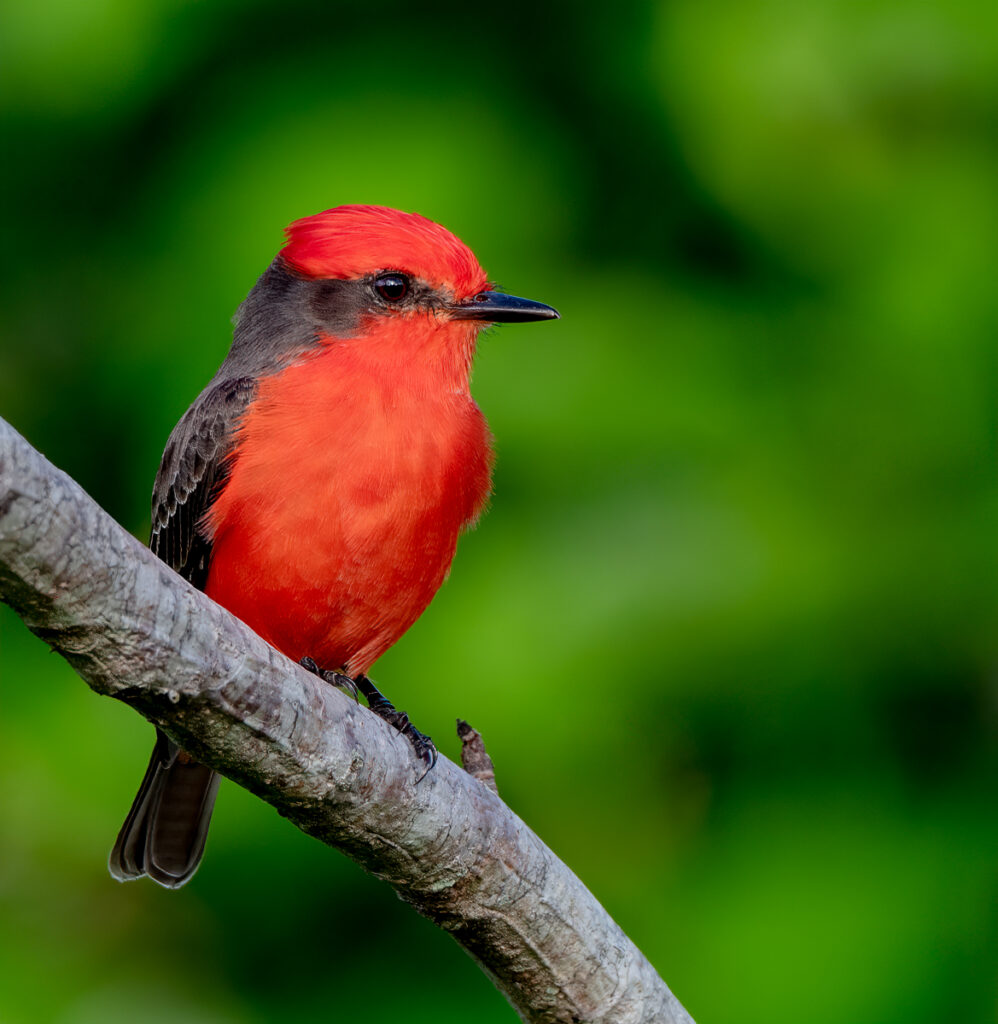
In our plumage color series, we’ve covered various hues and shades, but perhaps there is none more vibrant and eye-catching than the vivid flash of red, either against the dazzling backdrop of newly fallen snow, or the warm and comforting glow of new bright green as the sun shines. In the bird world, the color red signals just one thing – look at me.
Plumage serves a multitude of purposes, ranging from attracting mates to providing camouflage, or asserting dominance. Feathers keep newly hatched birds warm, enable flight for finding food, a mate, and to escape predators, and they boost body temperatures during the night, when wet, or during the cold harshness of winter. Plumage colors also serve as a way for species to communicate with each other, and the color red is the one that shouts the loudest of all. This coloration is purely about the display for signaling how healthy and strong the bird is – the redder the better. How these birds’ feathers become red lies in their food – molecules of pigmentation found throughout nature called carotenoids accumulate in their feathers, mingling either with light or other pigments like melanin to give a huge range of radiant reds.
Whilst flashes of red can be found in many species of birds throughout the world, there are only a relative few who exhibit this overall dominant color, and most of those can be found in the Americas.

A Tropical Bullhorn
The crimson-backed tanager is a striking bird found in the tropical regions of Central and South America. Males of this species exhibit a deep, velvety red plumage, almost bordering on black, earning it the Panamanian nickname sangre de toro, or ‘blood of the bull.’ Another distinctive feature of this species is a silvery-white sheen to the bill, particularly prominent on the lower mandible. The starkly contrasting black tail and wing feathers complete this often secretive bird that gathers in small flocks in dense foliage. During breeding season this red plumage becomes a beacon blaring throughout the verdancy of their habitat, helping in the identification of suitable mates. Currently classed as Least Concern by the IUCN, these tanagers are beginning to suffer from habitat loss as their range is restricted to forested lowlands and degraded forests.

The Elegant Ibis
The scarlet ibis is the only shorebird in the world with an overall red coloration, and these waders can be found in the wetlands and coastal regions of South America, the Caribbean, and the Gulf of Mexico. Like the other 27 members of its family, its form is identical, with long legs ending in splayed, long toes, a long neck that is extended in flight, and a dramatically decurved bill. The thing that sets this ibis apart from its relatives, however, is its gloriously vivid red plumage. During the mating season, the male scarlet ibis displays an elaborate courtship ritual that involves preening, shaking, bill popping, head rubbing, and high flights, displaying its radiant plumage that captivates potential mates. Scarlet ibises are one of the few birds to be protected throughout the world, and as such, are currently classed as Least Concern.

One in a Vermilion
Flycatchers tend to be known for two things: bland or neutral plumage, and aerial aptitude. Vermilion flycatchers knock the first attribute to the floor with their gorgeously uniform scarlet belly, chest, bib and head, bisected by a dramatic brown highwayman mask, which adds to the flamboyant effect by seeming to push up a red crest even higher. The deep brown stripe from the eyes widens at the back of the head then extends across the back, wings, and tail, and black legs and a matching black bill complete the look of this small yet beautifully engaging bird. Like all flycatchers, vermilions stand out on prominent perches waiting for unsuspecting prey to glide by, airborne insects plucked effortlessly from the ether in a flurry of twists, turns, and forensically-timed tumbles. Their range extends through all riparian habitats of South America and southern North America, and while they have experienced habitat loss and continue to do so, they are classed as Least Concern with populations numbering in their millions.


